Chrysokoll
Chrysocolla, Chrysocolle, Chryzocol, Chryzokola, Crisocola, Crisocolla, Koppargrün,
Хризоколла,
크리소콜라,
כריזוקולה,
矽孔雀石, クリソコーラ
Allgemein bekannt
seltener (sogenannte Sammlersteine)
ganz selten (Raritäten)
relativ seltenes organisches Material
|
Chemische Formel:
(Cu,Al)2H2Si2O5(OH)4·nH2O
Mineralklasse: Silikate Kristallsystem: orthorhombisch Mohs-Härte: 2 - 4 Dichte (g/cm3): 1,93 - 2,4 Refraktions-Index: 1,460 - 1,570 Spaltbarkeit: - Farben: blau, grün Transparenz: durchscheinend - opak Glanz: Glasglanz, porzellanartig Fluoreszenz: - Pleochroismus: - Größter Kristall: 0,5 cm? Fundorte: weltweit Entdeckung: Altertum Erstbeschreibung: ? Name: eine Kombination der griechischen Wörter "chrysos" (Gold) und "kolla" (kleben) |
|
Chrysokoll Mineral
Größe: 6,2 x 5,1 x 3,9 cm Herkunft: Inca de Oro / Chañaral Prov. / Atacama / Chile Foto mit freundlicher Erlaubnis von © www.irocks.com |
 |
|
Chrysokoll Paar
Größe: 2,1 x 1,4 x 0,2 cm Gewicht: 9,70 ct Herkunft: Bagdad Mine / Yavapai County / Arizona / USA Foto mit freundlicher Erlaubnis von © www.lucianabarbosa.com |
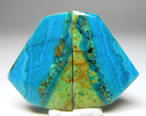 |
|
Chrysokoll Mineral
Größe: 3,29 x 2,33 x 0,78 cm Herkunft: USA Foto mit freundlicher Erlaubnis von © www.palagems.com |
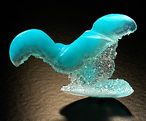 |
|
Chrysokoll
Gewicht: 3,20 ct Herkunft: Globe Hills / Arizona / USA Foto mit freundlicher Erlaubnis von © www.irocks.com |
 |
|
Chrysokoll Set
Größe: von 1,1 x 0,8 bis 2,1 x 1,5 cm Gewicht: total 34,68 ct Herkunft: Globe Hills / Arizona / USA Foto: Jason Stephenson, mit freundlicher Erlaubnis von © www.palagems.com |
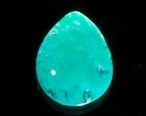 |
|
Chrysokoll Mineral
Größe: 5,4 x 4,2 x 1,8 cm Herkunft: Donghuan / Kunming / Yunnan Prov. / China Foto mit freundlicher Erlaubnis von © www.irocks.com |
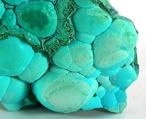 |
|
Chrysokoll Mineral in Quarz
Größe: 2,0 x 1,5 x 0,4 cm Herkunft: Ray Mine / Pinal County / Arizona / USA Foto mit freundlicher Erlaubnis von © www.lucianabarbosa.com |
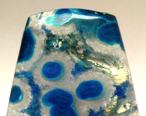 |
⇐ Intro Seite ⇐ Edelsteine